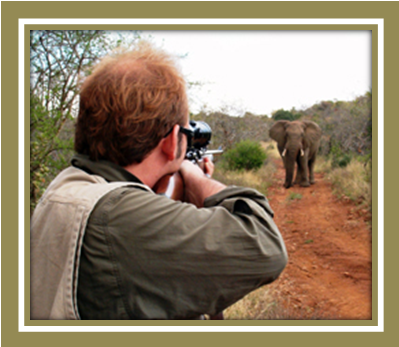News
Latest Lion Aid News
Lions and elephants off the trophy hunting menu in Zambia – for now
Saturday 6th September 2014
|
Still in my sights
Recently, the Minister of Tourism and Arts, Jean Kapata, reinstated (some) trophy hunting in Zambia. Her predecessor, Sylvia Masebo, placed a moratorium on trophy hunting in January 2013, citing irregularities in allocations of hunting concessions and worries over a sharp decline in Zambia’s wildlife. When LionAid was given the opportunity to address the Board of the Zambia Wildlife Authority (ZAWA) in June 2013 at the invitation of former Minister Masebo, we were told in no uncertain terms by the Chairman that trophy hunting would return. We submitted a written report detailing our concerns about the lack of proper information about lion populations and have yet to receive the promised reply. This is unlikely to be forthcoming as Minister Kapata fired that ZAWA Board when she was instated in March 2014, and there seems little progress to identify a new Board. Kapata mentioned that ZAWA was broke and dependent on income from hunting concession leases and trophy fees. She still excluded leopards and lions form the hunting menu, and recently this statement was issued to also exclude elephants: “ZAWA communications and public relations officer Readith Muliyunda said in a statement yesterday that that even before the ban was effected, Zambia was never been [sic] a pro-elephant hunting nation. Looking at CITES trade database records from 2008-2012, it would appear that 128 elephants were hunted in Zambia over those five years. That means that an average of 26 elephants were shot from only two GMAs per year. Is that a low level of elephant hunting? Regardless, it is clear that Zambia needs to carefully examine how it derives income from wildlife resources. If ZAWA is to attain financial stability, it would appear that a much greater effort should be made by government to promote photographic tourism to Zambia. Why not? Zambia is an incredibly beautiful country with a well-developed hospitality industry. Unfortunately, previous international donors like the Norwegian Aid organization have closed down their programmes in Zambia citing massive corruption in ZAWA. Minister Kapata will need a strategic mission to restore international donor confidence. She is not helped by a significant level of political turmoil in the country. Minister Masebo, as mentioned, was sacked. More recently the Minister of Justice and Chief Executive of the ruling Patriotic Front party, Wynter Kabimba, was sacked. President Sata appears to be terminally ill and there is much confusion about his capacity to fulfil his duties. It is rumoured that the Vice President, Guy Scott, is also in trouble. Given this scenario of political infighting, wildlife conservation will doubtless remain on the back burner for a while. Meanwhile, an impeccable source tells me that trophy hunting in Zambia will not be financially viable to the hunting operators unless lions, leopards and elephants are restored into the mix. Those are the “big draws” for foreign hunters, and therefore the pressure from the trophy hunting community will be persistent. So where to go from here? I’ll write another blog on the dire straits of Zambia’s lion population. As for elephants, there are no good estimates for Zambia. I’m not even sure that Zambia signed up to the pan-African elephant counts funded to an organization called Elephants Without Borders by the Paul Allen Foundation to the tune of $10 million. LionAid would urge Zambia to get her wildlife house in order, and diversify ZAWA’s income away from the heavy reliance on trophy hunting. There are good people in Zambia fighting for responsible conservation programmes. They have been lying low for a while with the political turmoil, but now would seem the time to speak out again. Picture credit: http://bit.ly/1pAHszp If you have not already signed up to our mailing list, you can add your name here and keep up to date with our ongoing work and, most importantly, DONATE to support our work to conserve the remaining fragile lion populations. Thank you. Categories: Events/Fundraising, Trophy Hunting, Extinction, Domesticating Animals |
Posted by Chris Macsween at 14:03
No comments have been posted yet.
Add a new comment
Existing user
New user sign up




